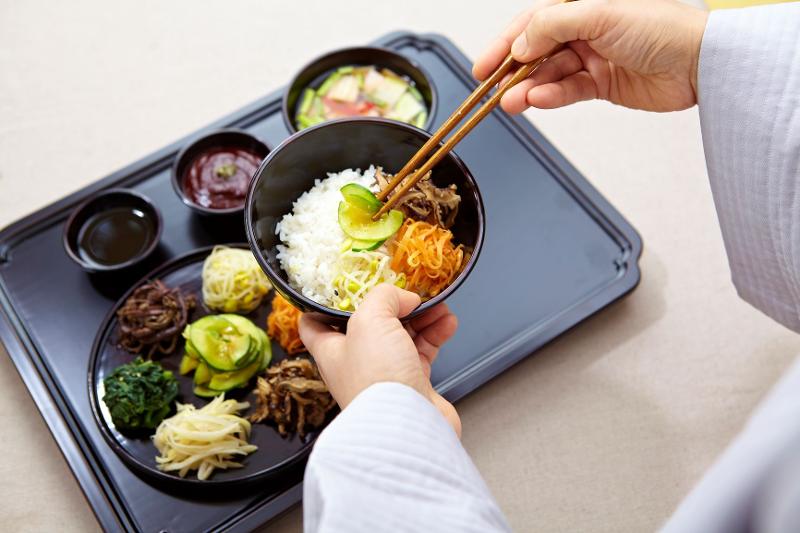- 한국어
- English
- 日本語
- 中文
- العربية
- Español
- Français
- Deutsch
- Pусский
- Tiếng Việt
- Indonesian
By Honorary Reporter Noorhan Adel from Egypt
Photo = Korea.net

This is a temple food meal being made at the French culinary school Le Cordon Bleu's campus in London.
Many Arabs want to travel to Korea, especially for the food, as its taste in Korea is considerably different from that served in the Middle East.
Because most Arabs are Muslims, halal choices are a must when eating Korean food. A prime alternative is Buddhist temple food made and eaten daily by monastics using vegetables grown at a temple. Everyone there directly helps make the food with no animal products, as Buddhism forbids eating meat and urges its followers to show mercy to all living creatures.
Temple food ingredients are basically vegetables except for five forbidden pungent roots called oshinchae: green onions, garlic, chives, Korea wild chives and heunggeo (a type of leek). The five are prohibited at temples because they hinder the spiritual practice of the monastics and to protect Buddhists from distraction while meditating. They are also believed to cause distraction as well as aggressiveness and anger. Certain strong spices are also not permitted in Buddhism.
To season and flavor food, monastics use natural spices readily available around temples such as mushroom, perilla, seaweed and bean powder. These are used to prepare various dishes as flavor enhancers.
Islam bans the eating of pork and all foods containing the meat, while some Muslims disagree about beef and chicken because of the method of animal slaughter is unaffiliated with Islamic ways. Thus many Arabs search for halal shops and markets but temple food is a great option for having no meat or alcohol content. As a vegan myself, I'm glad to know that Korea has many restaurants for vegans and temple food.
So where is temple food available and how is it eaten?
Certain Buddhist temples have a gongyanggan (courtyard) with a kitchen and dining hall. Though the space is mostly for resident monastics and temple workers, some temples allow the public to eat there at certain times of the day. Food is served as a buffet in which each visitor can fill a bowl with rice and vegetable side dishes. Other temples offer pre-made bibimbap (rice mixed with meat and assorted vegetables) with no meat.
To better enjoy this unique experience, the following are my guidelines for eating temple food.
• Check a temple's dining times.
• Eat without talking or making any sound.
• Leave no leftovers.
• Wash your dishes after eating.
• Donate to the temple to express gratitude.
Besides temples, many restaurants in Seoul offer temple food such as Balwoo Gongyang or Sanchon or the cultural space of the Korean Temple Food Center.
kalhong617@korea.kr
*This article is written by a Korea.net Honorary Reporter. Our group of Honorary Reporters are from all around the world, and they share with Korea.net their love and passion for all things Korean.